The latest addition to KNIME Learning is the [L4-DV] Low Code Data Extraction and Visualization course. This course is the highest level 4 course (L4) and completes the training paths for the most common data professional figures.
-
Data Professionals
-
Data Scientists
-
Life Sciences Data Scientists
-
KNIME Software Experts
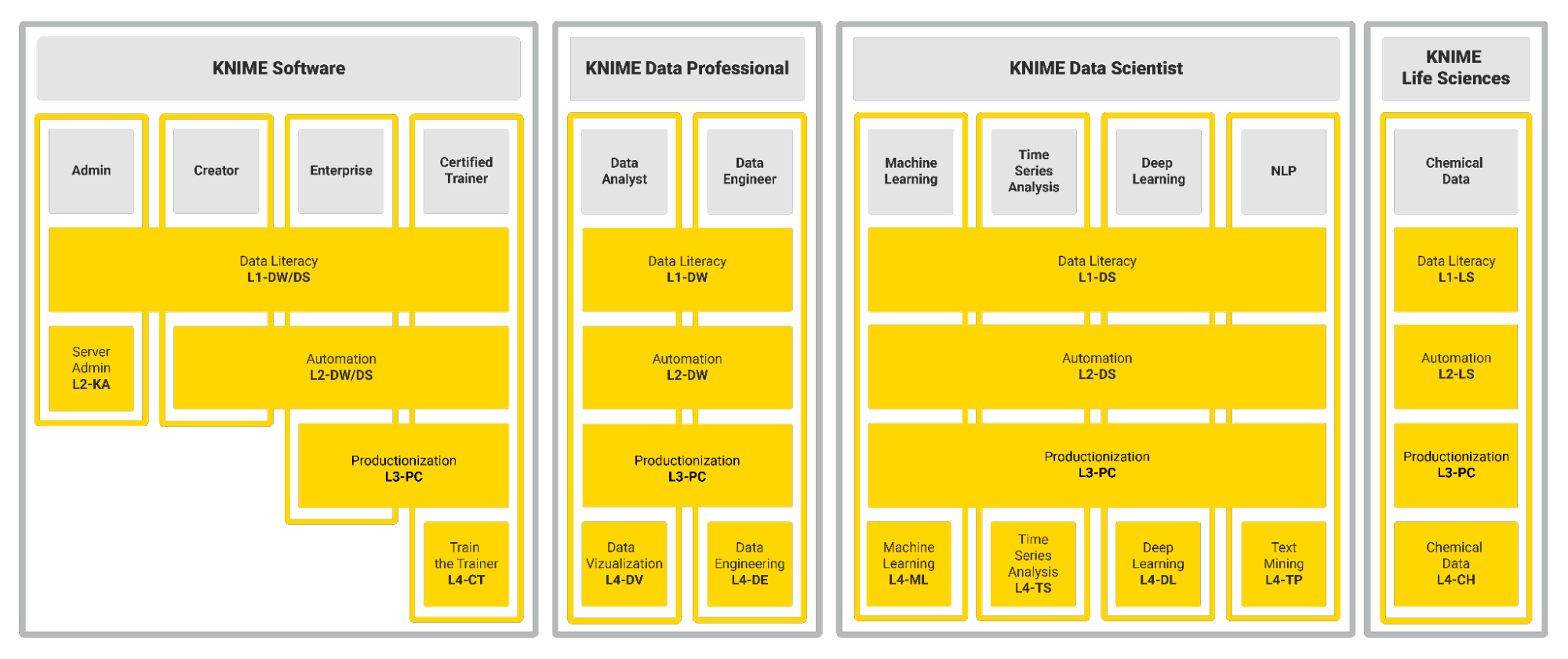
With this new course, we now have a full set of learning paths to accompany you from the very basic steps (level L1) through to the most specialized topics (level L4) for selected professional roles. Some courses are common across professional roles while other courses, especially in the most advanced levels, are specific to professional roles. Depending on what kind of data expert you are (or want to be), we have the full learning path for you.
Most learning paths follow a similar structure, covering four courses.
-
Level L1 – Data Literacy. The first course teaches you how to implement a simple data transformation application, via the basic features of KNIME Analytics Platform.
-
Level L2 – Automation. The second course teaches you how to repeat and automate operations within your application by using more advanced control features in KNIME Analytics Platform.
-
Level L3 – Productionisation. In the third course, you will learn to deploy, productionize, and monitor your previously developed applications.
-
Level L4 – Specialization. Finally, in the fourth course, you will learn the best practices for the selected professional profile.
At the end of each learning path, you will possess the knowledge necessary to use KNIME Analytics Platform at best for your endeavor.
Note. Remember that all of these courses are taught online by a KNIME Certified Trainer. The majority of them are also available in self-paced learning mode.
Learning Paths for Data Professionals
Data professionals include all those professional figures dealing with data in their own field. They are not data scientists, in the sense that they do not deal with machine learning algorithms directly. Nevertheless they need to access, move, transform, store, and visualize the data to monitor and quantify the business.
Data professionals refer to two specific profiles: data analysts and data engineers.
-
Many data professionals are data analysts. Usually, these are domain experts, like physicians, marketers, and accountants, who need to calculate and quantify patients' wellbeing, social statistics, company KPIs, or the ROI of initiatives. While masters in their own field, they are the only ones who know the meaning of their formulas, how to transform their data, and what the visualizations mean.
-
Data engineers are typically responsible for building data pipelines to bring together information from different source systems, to ensure the quality of the data and of the models, and to monitor both.
All learning paths for data professionals share three common courses and require one specialization course at the end.
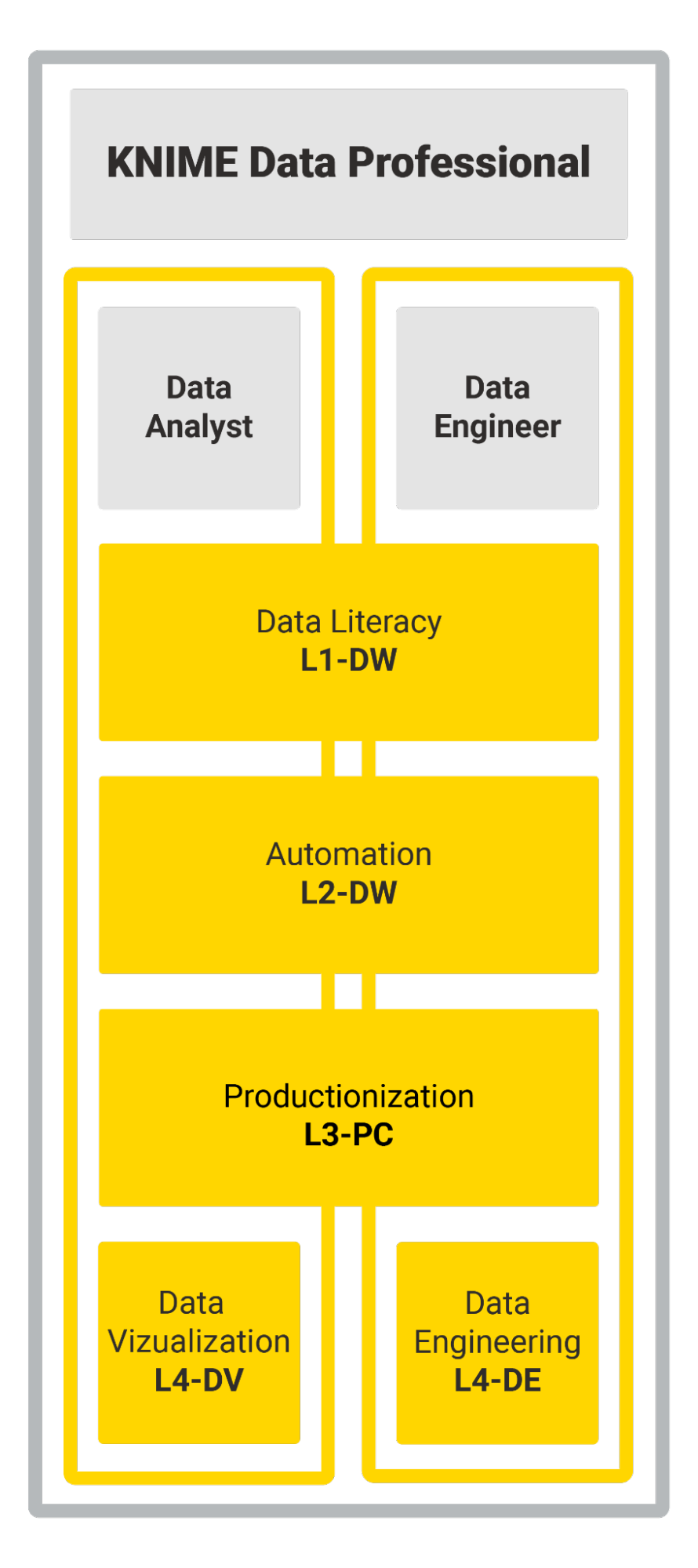
L1. The learning path, for all data professionals, starts with the “[L1-DW] KNIME Analytics Platform for Data Wranglers: Basics” course. This is a basic course (L1 level), introducing KNIME Analytics Platform.
L2. Moving up one level, the next course in this learning path is the “[L2-DW] KNIME Analytics Platform for Data Wranglers: Advanced”. This course teaches the more advanced features of KNIME Analytics Platform software and how to apply them to transform and visualize data.
Compared to the similar courses “[L1-DS] KNIME Analytics Platform for Data Scientists: Basics” and “[L2-DS] KNIME Analytics Platform for Data Scientists: Advanced”, the [L*-DW] courses have fewer machine learning contents, therefore they are less compact and roll at a slower pace across the four customary lessons.
L3. After familiarizing with the concept of building a data application with KNIME, the third course “[L3-PC] KNIME Server: Productionizing and Collaboration” teaches you how to deploy it, schedule it, protect it, and monitor it on the KNIME Server.
Note. See the agendas for these courses in our KNIME Self-paced Courses program. If you prefer to take an instructor-led online course, see the schedule for upcoming courses.
Data Analysts (aka Business Analysts)
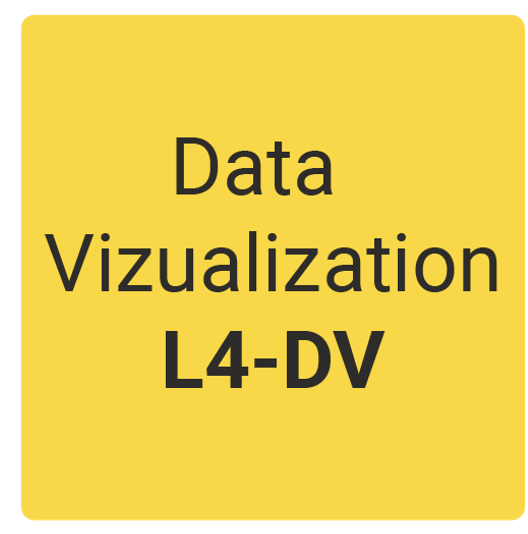
L4. After completing the L1, L2, and L3 level courses, the “[L4-DV] Low Code Data Extraction and Visualization” course (the one premiering on September 12) teaches the data analysts about best practices in data extraction, data visualization, techniques for outlier detection, regex rules, and how to build flexible and functional dashboard to show your colleagues.
Data Engineers
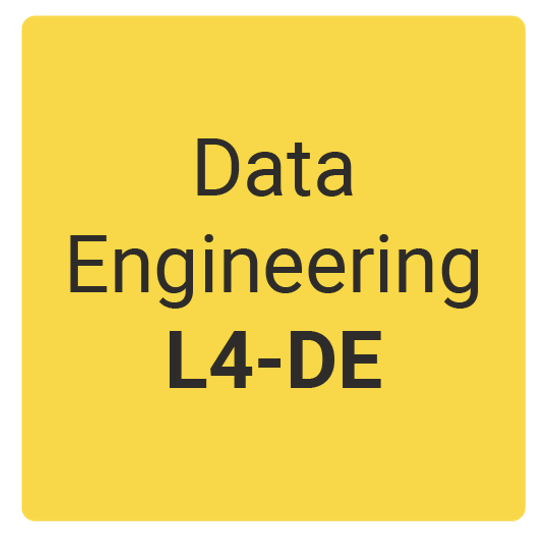
L4. “[L4-DE] Best Practices for Data Engineering” is the L4 course dedicated to data engineers. This course teaches about connections to multiple data sources, techniques for data anonymization, advanced database handling, the Apache Spark integration to handle big data, and finally about building and orchestrating modular workflows. The course also provides best practices for data engineering, such as graceful exit or data security. That is, the required technical skills for a data engineer.
Note. See the agendas for these courses in our KNIME Self-paced Courses program. If you prefer to take an instructor-led online course, see the schedule for upcoming courses.
Learning Paths for Data Scientists
Data Scientists are the most popular professional group working with data. They are data experts equipped with mathematical and algorithmic skills, often involved in the development of machine learning models to find hidden patterns and trends in datasets. The field of data science is quite wide and therefore there are many specializations within the data science profession:
-
Predictive analytics via machine learning algorithms. Machine learning algorithms can automatically define boundaries in a dataset and extract information from the groups or classes within it.
-
Predictive analytics via deep learning algorithms. Deep learning algorithms are a part of machine learning algorithms stemming from the theory of neural networks. Deep learning algorithms have become so popular over the past years that data scientists with expertise in deep learning are often requested.
-
Time series analysis. Time series analysis is a transversal branch of data science, since it includes data visualization, statistical techniques, or machine learning based methods all applied to time series.
-
Natural Language Processing (NLP). A special area of data science is reserved for the analysis of text documents. Specialized text processing techniques must be applied to convert a sequence of words into a sequence of numbers and to extract information from it.
There is a learning path for each one of these data science specializations. Though, all of them share the same common basis of L1, L2, and L3 courses.
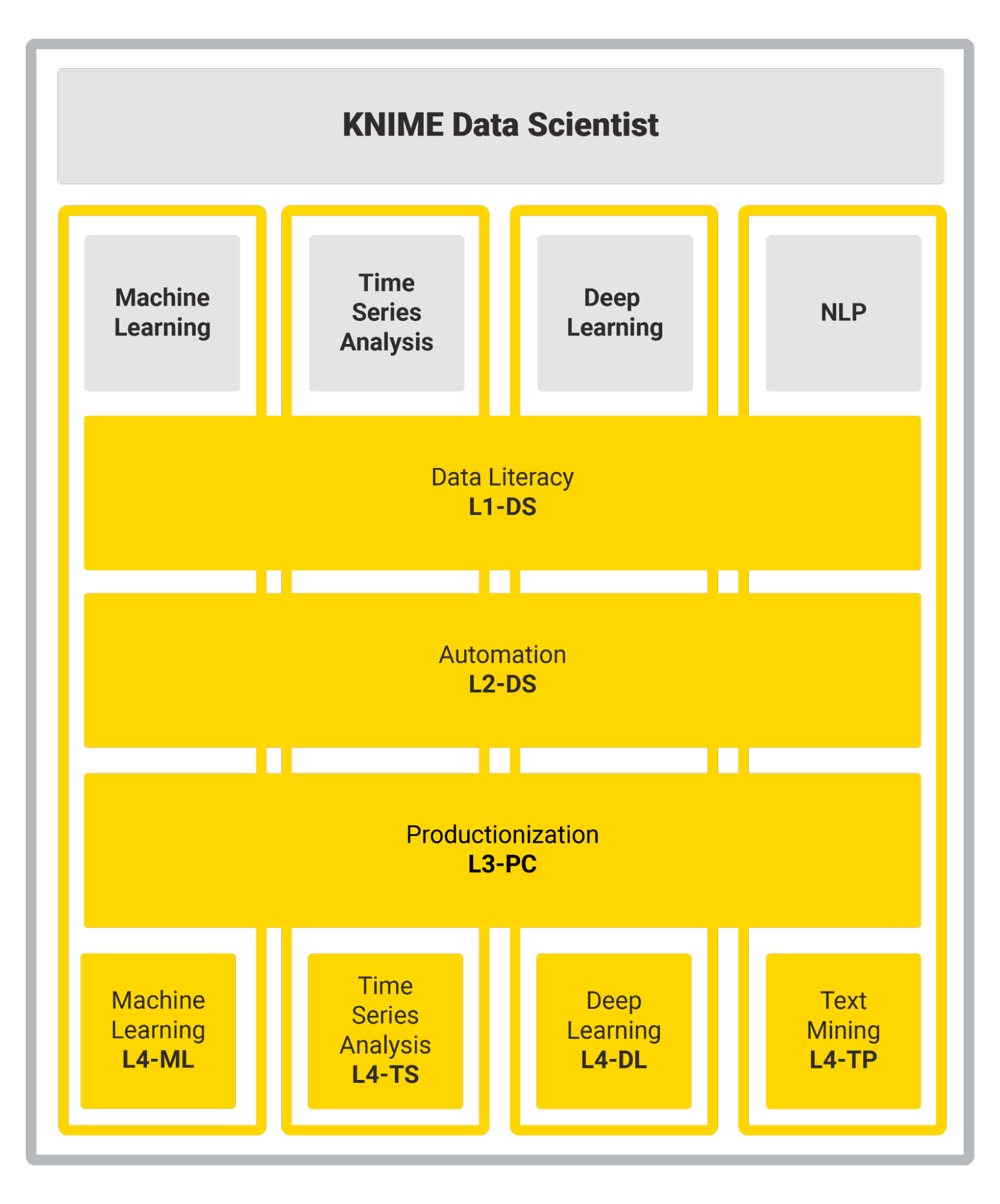
L1. The course “[L1-DS] KNIME Analytics Platform for Data Scientists: Basics” is the starting point. This is a basic course (L1 level), introducing KNIME Analytics Platform.
L2. The next course is “[L2-DS] KNIME Analytics Platform for Data Scientists: Advanced”. This course explores the more advanced features of KNIME Analytics Platform software, including how to train and apply some commonly used machine learning models.
Compared to the similar courses “[L1-DW] KNIME Analytics Platform for Data Wranglers: Basics”and “[L2-DW] KNIME Analytics Platform for Data Wranglers: Advanced”, these courses are a bit more compact, including some units on machine learning topics, and roll at a faster pace across the four customary lessons.
L3. After familiarizing with the concepts of transforming and visualizing data, training and deploying a machine learning model, this third course “[L3-PC] KNIME Server: Productionizing and Collaboration” teaches you how to deploy the model, and productionize all related applications using the KNIME Server.
Specialization Courses
Machine Learning
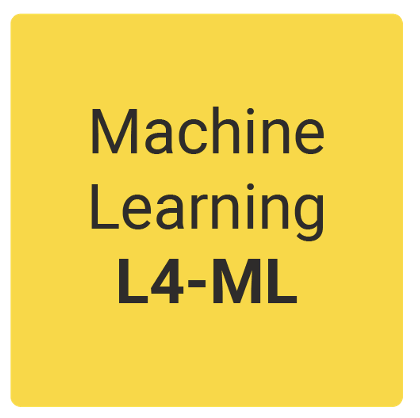
The course “[L4-ML] Introduction to Machine Learning Algorithms” concludes the learning path for a data scientist specialized in machine learning. The course explores a large number of commonly used supervised and unsupervised algorithms, such as decision trees, regressions, ensemble models, clustering, recommendation engines, neural networks and the latest advances in deep learning. In addition to explaining the algorithms, the course also discusses various evaluation metrics for trained models and some classic data preparation techniques, such as normalization and dimensionality reduction.
Deep Learning
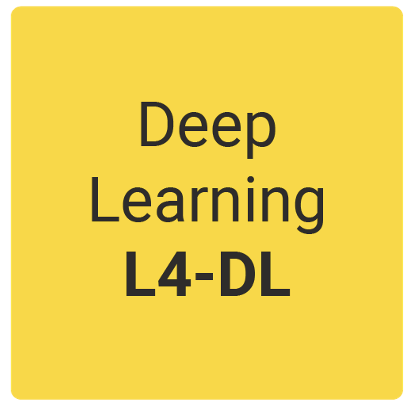
Throughout the past decade, the use of deep learning methods has been constantly rising. To become a data scientist specialized in deep learning, the last course to take is the “[L4-DL] Introduction to Neural Networks and Deep Learning”. This course starts from the theory and implementation of classic neural networks and moves onto the theory and implementation of specific deep learning units, like RNN, LSTM, CNN, and others, for classification, numeric prediction, sequence analysis, time series analysis, and image processing.
Natural Language Processing (NLP)
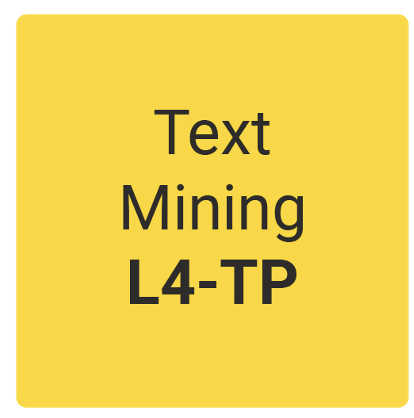
The conclusive course to become an NLP-specialized data scientist with KNIME, is the “[L4-TP] Introduction to Text Processing”. This course is about text mining, its theory, concepts, and applications. Specifically, the course focuses on the acquisition, processing, and mining of textual data through descriptive analytics (data visualization, clustering) and predictive analytics (classification) methods, with examples of popular text mining applications including social media analytics, topic detection and sentiment analysis.
Time Series Analysis
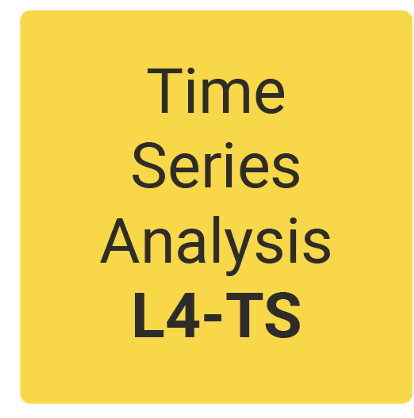
The last learning path that we considered for data scientists is around time series analysis. The concluding course for this learning path is “[L4-TS] Introduction to Time Series Analysis”. This course introduces the main concepts behind Time Series Analysis, with an emphasis on forecasting applications: data cleaning, missing value imputation, time-based aggregation techniques, data visualization, model training (from simple basic models to more complex statistics and machine learning-based models), hyperparameter optimization, and model evaluation.
Note. See the agendas for these courses in our KNIME Self-paced Courses program. If you prefer to take an instructor-led online course, see the schedule for upcoming courses.
Learning Path for Life Sciences Data Scientists
Many life scientists are actually data scientists, somewhat specialized on biology and chemistry data. The type of data usually requires ad hoc techniques to import, transform, and represent the data. For this reason, a special learning path has been created for data professionals in the life sciences. As for previous learning paths, there is a common part for all professional profiles and at the end a specialization part for each specific professional profile.
In the life sciences, the following learning path is available:
-
Life Sciences Data Scientist
Again, a common basis of courses is required for the first three levels till the specialization level is reached.

L1. The starting course for data professionals in the life sciences is “L1-LS KNIME Analytics Platform for Data Scientists - Life Sciences - Basics”. This is a basic course (L1 level), introducing KNIME Analytics Platform on biology and chemistry data.
L2. “L2-LS KNIME Analytics Platform for Data Scientists - Life Sciences - Advanced” is the next course. Like other L2 courses, this course explores the more advanced features of KNIME Analytics Platform software, with a focus on life sciences.
These courses cover the same topics as the other L1 and L2 courses. They are just focused on life sciences applications and data.
L3. After familiarizing with the basic concepts of KNIME workflows for the life sciences the third course “[L3-PC] KNIME Server: Productionizing and Collaboration” teaches you how to productionize a KNIME workflow into a public application using the KNIME Server.
Specialization Course
Chemical Data
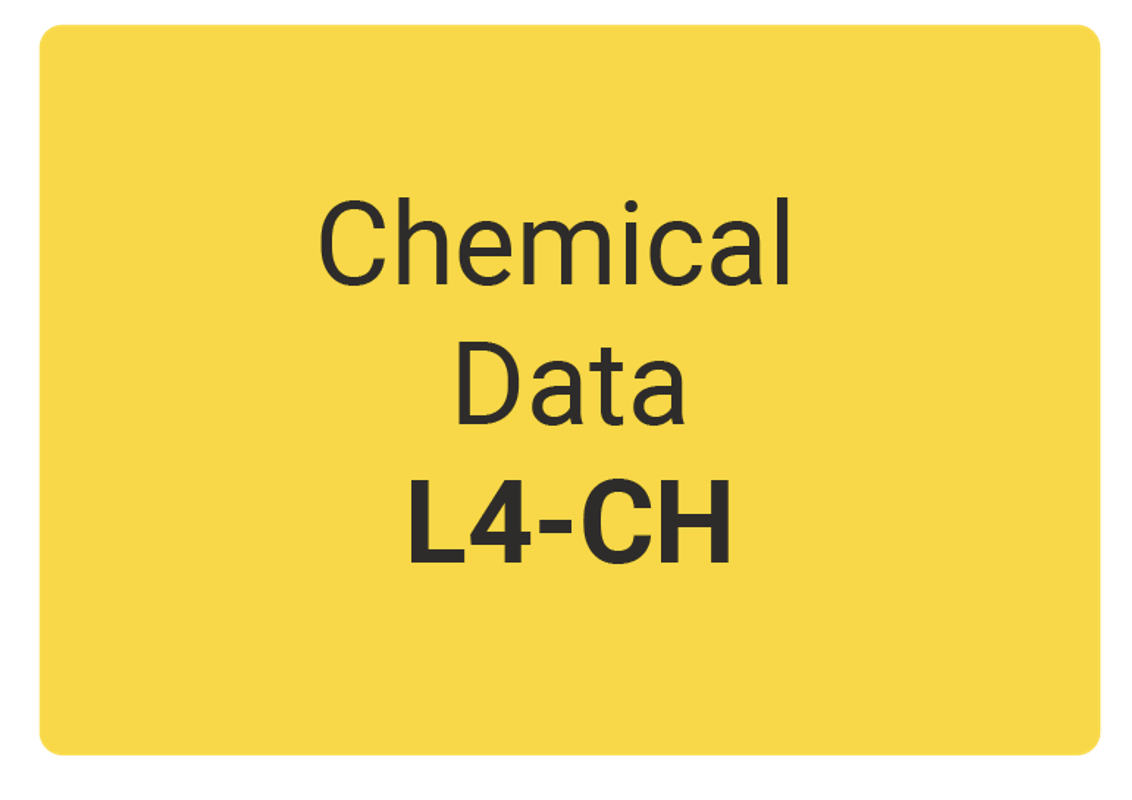
L4. During the course you’ll learn to build interactive cheminformatics workflows using KNIME Analytics Platform and its Cheminformatics Extensions. The hands-on training will contain several units where we’ll cover a diverse set of topics such as data manipulation and interactive filtering, fingerprints and R-group decomposition, similarity searches and clustering, and data visualization and exploration.
Learning Paths for KNIME Software Experts
It is not necessary to complete a full learning path for a specific profile. We are also supporting specialists of the KNIME software. In this case, the learning paths might be shorter since a further specialization is not required.
We see the following experts as KNIME specialists:
-
The Admin. Those are IT specialists who will make sure that the KNIME software is running and running well, that all processes have been implemented and are followed by the data team.
-
The Creators. Those are the workflow builders and implementers. They know all the secrets of how to create and implement even the most complex task in a workflow.
-
The Enterprise experts. In addition to creating workflows they can also productionize it. They know the KNIME Server in and out to implement the best practices in productionization of data science applications.
-
The Trainers. Those are the educators, the ones we all rely on to upskill more KNIME users to the highest level. The trainers not only can create and productionize workflows, they also need to be able to teach and clearly explain all concepts inherent to KNIME software and data science. This is the only learning path in this category that might require an L4 course as well.
The basic courses for this category are the same as for all other categories.
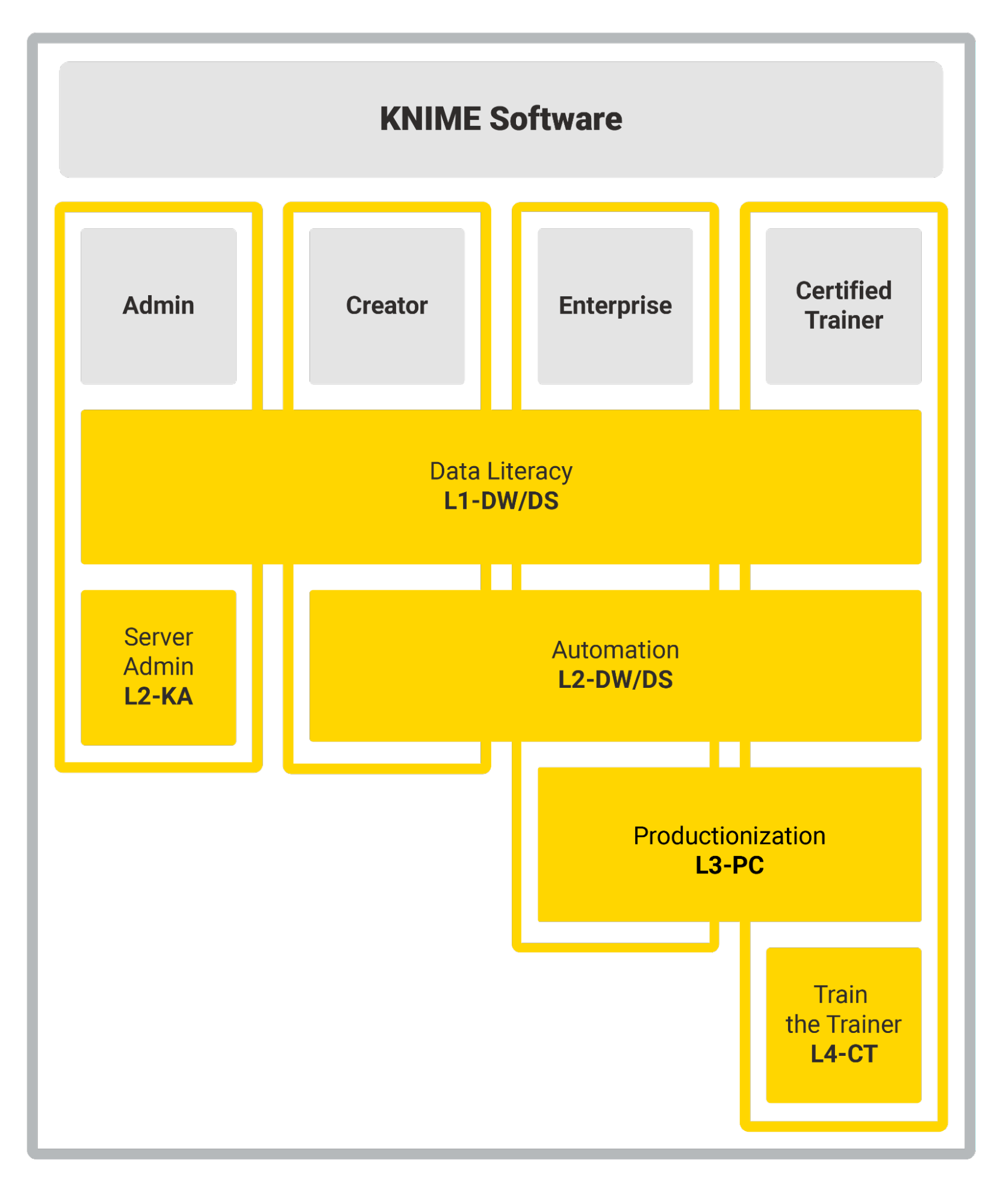
L1. The course “[L1-DW] KNIME Analytics Platform for Data Wranglers: Basics” is the starting point. This is a basic course (L1 level), introducing KNIME Analytics Platform. You could also take the “[L1-DS] KNIME Analytics Platform for Data Scientists: Basics” course instead.
L2. The next course is “[L2-DW] KNIME Analytics Platform for Data Wranglers: Advanced”. This course explores the more advanced features of KNIME Analytics Platform software. For this learning path, you could also take the “[L2-DS] KNIME Analytics Platform for Data Scientists: Advanced”
L3. This third course “[L3-PC] KNIME Server: Productionizing and Collaboration” teaches you how to productionize the developed data applications using the KNIME Server.
Trainers
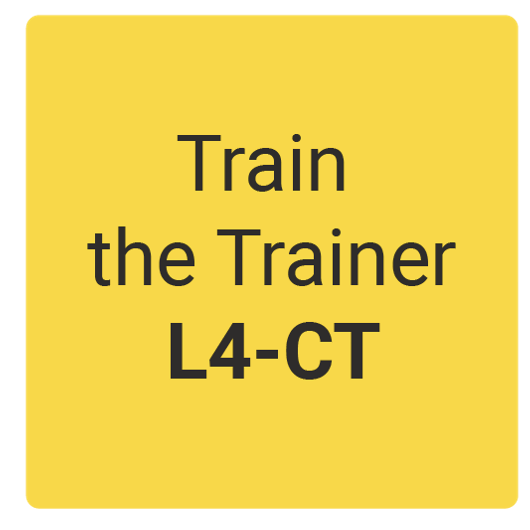
To become a KNIME certified trainer, you need to pass an exam that evaluates your teaching skills. If you are a seasoned teacher already, you probably do not need much help. However, if you are still green in your teaching career, the “[L4-CT] Train the Trainer” course might just give you a few essential hints on how to teach KNIME software and data science. Notice that this course is available only in the self-paced mode.
Enterprise
The KNIME enterprise experts have attended all courses from level L1 to level L3. They can solve data problems by developing KNIME workflows and can productionize them via the KNIME Server. These experts work in the enterprise environment creating data solutions for a variety of industries while collaborating within their teams on the KNIME Server.
Creator
The L1 and L2 courses give you the fundamentals to create all sorts of applications via KNIME Analytics Platform.
Admin
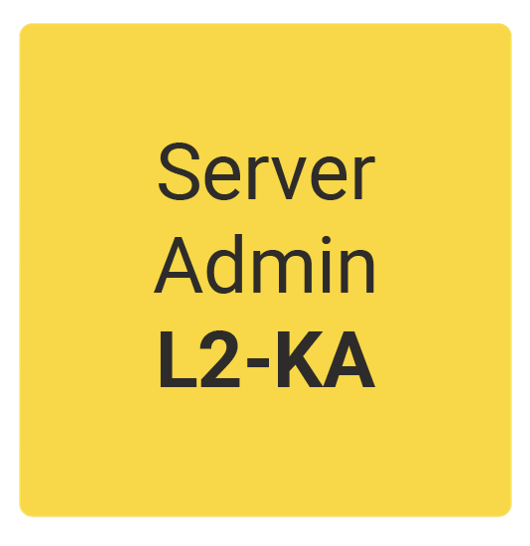
To become an IT administrator of the KNIME Server, you will need to attend at least an L1 course, just to have an idea of what it means to develop a KNIME workflow. After that, you will need to attend the “[L2-KA] KNIME Server Administrator” course to learn about the tasks, roles, and commands available for the administration of the KNIME Server.
Time to Take Charge
There you have the KNIME learning paths for various data professional journeys in a nutshell. They are designed to help you advance your professional data career by focusing on the most essential data skills using KNIME Software today. To get started with your learning path, enroll in one of our self-paced courses or register for an online instructor-led course.
